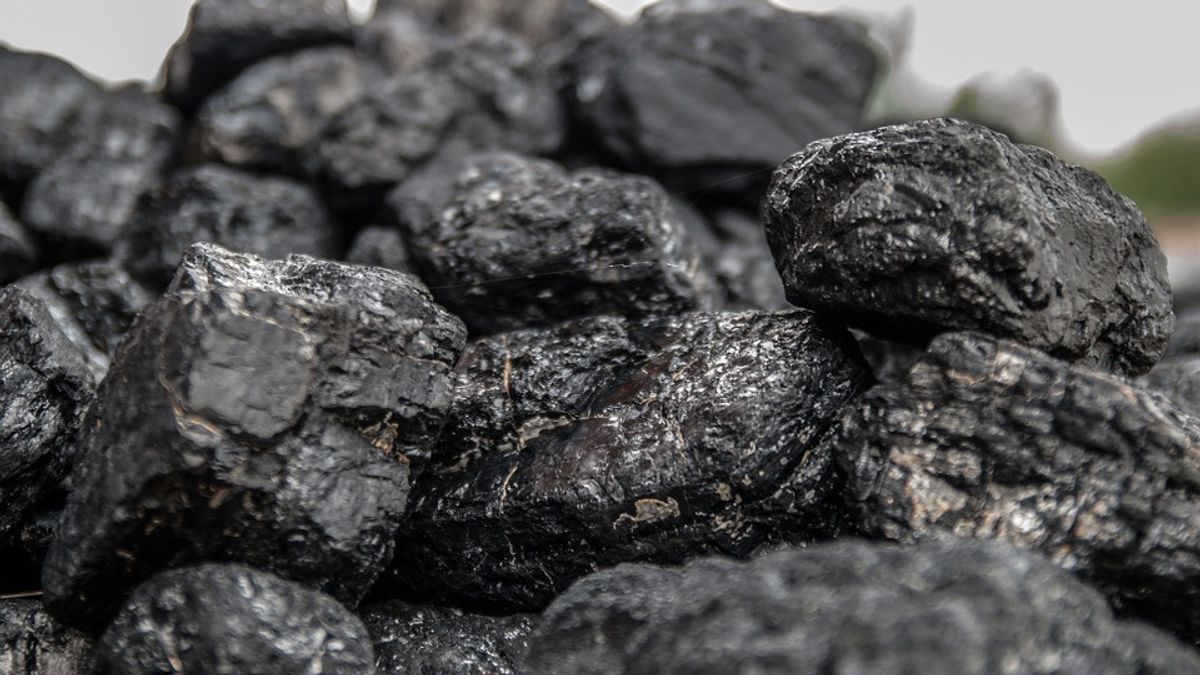JAKARTA - Coal is Indonesia's most vital https://voi.id/tag/1955/tambang commodity. One form of utilization of coal is as an energy source for electricity generation.
Indonesia itself is one of the largest producers and exporters of thermal coal in the world. Based on research results from the Geological Agency of the Ministry of Energy and Mineral Resources (ESDM) in 2020, the total coal resources in Indonesia reached 143.73 billion tons with reserves of 38.81 billion tons.
“Indonesia has a very large coal wealth. The results of the 2020 Tofu Geological Agency's research recorded coal resources as much as 143.73 billion tons with reserves of 38.81 billion tons," said Head of the Geology Agency of the Ministry of Energy and Mineral Resources Eko Budi Lelono on March 26, quoted by VOI from Antara.
The availability of such large natural resources of coal can provide its own advantages, especially if the raw minerals are processed domestically.
Therefore, the presence of coal is still very much needed in Indonesia, considering that this fossil fuel provides many benefits for humans.
Utilization of Coal in Everyday Life
Compiled by VOI from various sources, the following are the benefits of coal that are inherent in everyday human life:
1. A source of energy for generating electricity
The benefit of coal that is most closely related to human life is as a source of electricity generation. Several countries that also use coal as the main fuel for power plants include China, India, Australia, Japan, Germany, and several other countries.
According to the records of the Ministry of Energy and Mineral Resources, domestic coal consumption, aka the Domestic Market Obligation, in 2020 reached 121.89 million tons with the largest use for supplying Steam Power Plants (PLTU).

As additional information, currently, there are 237 coal-fired power plants in Indonesia, of which 31 percent are in Java, Bali, and Nusa Tenggara. Then Sumatra has 25 percent, Sulawesi 17 percent, Maluku 2 percent, and Papua 1 percent.
The total installed capacity of the coal-fired power plant is 34.6 Giga Watts. The use of coal is 98.9 million tons with a potential Fly Ash and Bottom Ash (FABA) of 9.89 million tons, as quoted from Antara.
2. Producer of gas products
The second benefit of coal is that of producing gas products. This natural gas is obtained from coal that is still in the ground. Coal that is in the ground directly produces natural gas.
Next, natural gas produced by pure coal will be processed in mines to become a variety of products, such as industrial fuel, gas-fired power plants, and hydrogen and diesel products.
3. Supporting the aluminum industry
Coal can also be used to support the aluminum industry. This material is obtained as a byproduct of the iron oxidation process in the activity of the steel industry.
Gas and coking heat from coal can separate some steel products. This then produces aluminum products, which are usually used for various types of industries such as agriculture, kitchen utensils, construction, and other industries.
4. Supporting the steel products industry
The benefit of coal for other industrial activities is to help the steel-product industry. It is known, steel is one type of material that has an important role in everyday human life.

You can produce a variety of products that can help human life, such as medical equipment, agricultural equipment, transportation equipment, as well as machineries commonly used in household activities.
5. Useful for the cement industry
Besides being useful for the steel and aluminum industry, coal is also useful for the cement industry. Coal is a natural or quarried material that is known to act as a raw material for making cement
Although it is not used as a raw material in terms of materials, coal is used in the combustion process, so the role of coal is very important in this industry.
6. Useful for the paper industry
The next benefit of coal is to help production in the paper industry. As is well known, the heat generated by coal is very high. Therefore, coal heat is often used for the paper industry.
Coal is very effective to use because the heat generated is very stable in the fiber processing machines used for the paper raw material industry.
7. Use of coal tar
Refining coal will produce a residue known as coal tar which is liquid and dark black in color.
Coal tar is often used for repairing houses and buildings, as well as for fabric production. This material is widely used to make buildings waterproof, insulating buildings, making paint, cloth, shampoo, and soap.
Utilization of Coal Waste
Some time ago, the Indonesian government issued fly ash and bottom ash from the category of hazardous and toxic waste, aka B3.
This regulation is stated in Government Regulation (PP) Number 22 of 2021 concerning the Implementation of Environmental Protection and Management. The policy, which was signed by President Joko Widodo, will take effect from February 2, 2021.

Fly ash and bottom ash are solid waste generated from the coal burning process at the Steam Power Plant (PLTU).
According to LIPI researcher, Nurul Taufiq Rochman, coal waste can be of economic value if it is used to support infrastructure such as raw materials for road construction, conblocks, cement, to raw materials for fertilizers.
"So, it will be a big loss if the waste is not used," said Nurul, as quoted from Antara.
He said that currently, not one country categorizes coal waste as B3, so it is strange if the waste is not utilized.
The English, Chinese, Japanese, Arabic, and French versions are automatically generated by the AI. So there may still be inaccuracies in translating, please always see Indonesian as our main language. (system supported by DigitalSiber.id)













